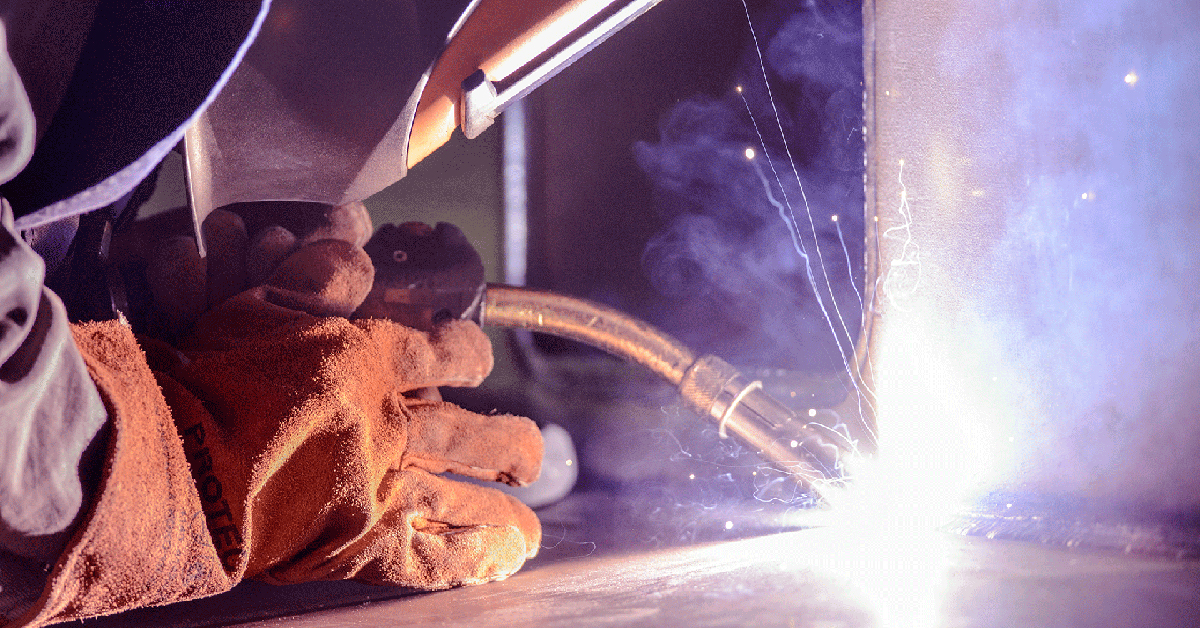Recognizing the Causes and Solutions for Undercut Welding in Steel Construction Procedures
In the realm of steel construction processes, the incident of undercut welding postures a significant challenge that requires a thorough understanding of its reasons and feasible solutions. The detailed interaction of various variables during welding procedures can lead to this unwanted sensation, influencing the structural honesty and total high quality of the welded joints - Preventing weld undercut. By studying the origin of undercut welding and discovering effective restorative steps, producers can elevate the criterion of their handiwork and ensure the manufacturing of remarkable steel parts
Typical Causes of Undercut Welding
Regularly neglected in steel manufacture, undercut welding takes place due to different aspects that require precise attention and know-how to be successfully mitigated. Additionally, incorrect welding methods, such as making use of the wrong welding angle or travel rate, can additionally contribute to damage development. The selection of welding criteria, such as voltage, present, and cord feed speed, plays a significant duty in the incident of undercut welding.
Influence of Incorrect Welding Parameters
Inaccurate welding criteria can dramatically endanger the honesty and quality of welded joints in steel manufacture procedures. The impact of incorrect welding criteria materializes in various ways, bring about architectural weak points and problems in the bonded components. One critical aspect affected by inappropriate welding specifications is the infiltration deepness of the weld. Not enough heat input because of reduced welding currents or excessively high travel speeds can lead to insufficient combination between the base metals, resulting in incomplete joint infiltration and deteriorated bonds. Alternatively, excessive warm input triggered by high welding currents or slow traveling speeds can lead to burn-through and excessive reinforcement, creating a brittle and unpredictable weld framework. Additionally, wrong criteria such as improper voltage setups or inaccurate electrode angles can add to unpredictable weld bead profiles, lack of blend, and increased chances of defects like damaging. Careful attention to welding specifications is extremely important to ensure the production of high-grade welds with the desired mechanical residential properties and structural stability.
Impact of Improper Lantern Angle
Inappropriate lantern angle in welding procedures can substantially affect the quality and integrity of the final weld joints in steel fabrication procedures. The torch angle plays a crucial function in determining the warm input and distribution throughout welding. When the lantern angle is inaccurate, problems such as damaging can emerge. Undercutting is a typical welding issue where a groove forms along the weld toe, compromising the joint and jeopardizing its architectural integrity.
A torch angle that is too steep can result in insufficient penetration, insufficient combination, and boosted spatter. On the other hand, a lantern angle that is as well shallow can result in extreme penetration, burn-through, and distortion of the base material. Preventing weld undercut. Proper torch angle is essential for making certain constant weld top quality, strength, and look
To stop undercutting and various other flaws triggered by inappropriate torch angles, welders need to be trained to maintain the proper torch angle throughout the welding procedure. Regular monitoring and change of torch angles during welding can aid achieve audio company website welds with marginal defects.
Role of Inadequate Welding Strategies

One more element of insufficient welding strategies is inappropriate weld preparation. Insufficient cleaning of the base steels, inaccurate joint layout, or not enough side prep work can all add to damage welding. In addition, inadequate protecting gas insurance coverage or making use of the incorrect sort of gas can cause insufficient blend and the development of undercut issues.
To deal with the function of inadequate welding methods in metal manufacture procedures, it is important to provide comprehensive training for welders. Correct education on welding criteria, joint prep work, and shielding gas option can aid protect against undercut welding you can find out more and guarantee high-grade welds in steel fabrication jobs.
Efficient Solutions for Undercut Welding
Addressing undercut welding in metal manufacture requires executing effective remedies to enhance weld high quality and architectural stability. One of the main services to fight undercut is to readjust welding specifications such as voltage, present, and travel speed to ensure appropriate heat input and blend. By fine-tuning these setups, welders can protect against excessive melting of the base steel and filler material, lowering the possibility of undercut formation.
Furthermore, correct joint preparation is essential in stopping undercut. Making certain clean base steel surface areas devoid of pollutants and making use of the appropriate bevel angle can help advertise better weld penetration and lower the threat of undercut - Preventing weld undercut. Utilizing appropriate welding techniques, such as oscillating the lantern or weaving, can additionally help in distributing warm equally and loading the weld joint effectively, lessening the possibility of undercut defects
Moreover, selecting the right welding consumables, consisting of electrodes and filler metals, is essential in reducing undercut. Utilizing materials with proper chemical structures and mechanical properties can add to achieving sound welds with very little undercut. Routine assessment and high quality control measures should additionally be applied to discover and attend to undercut concerns immediately, guaranteeing the total stability of fabricated metal elements.

Final Thought
Finally, understanding the reasons and solutions for undercut welding in metal construction procedures is crucial for attaining top quality welds. By attending to common causes such as incorrect welding parameters, improper torch angle, and poor welding methods, welders can protect against damaging and make sure solid, durable welds. It is vital to focus on these factors and execute effective remedies to improve the total welding procedure and last item top quality.
